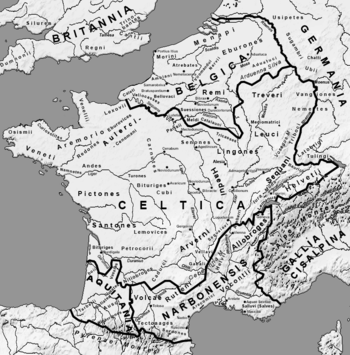Ambarri


The Ambarri were a Gallic people, whom Julius Caesar (B. G. i. 11) calls close allies and kinsmen of the Aedui. If the reading Aedui Ambarri in the passage referred to is correct, the Ambarri were Aedui. They are not mentioned among the clientes of the Aedui. (B. G. vii. 75.) They occupied a tract in the valley of the Rhône, probably in the angle between the Saône and the Rhône; and their neighbors on the east were the Allobroges. They are mentioned by Livy (v. 34) with the Aedui among those Galli who were said to have crossed the Alps into Italy in the time of Tarquinius Priscus.
Several communes in today's Ain department of France derive their name from them, including: Ambérieu-en-Bugey, Ambérieux-en-Dombes, Ambutrix and Ambronay.
They joined Bellovesus'migrations towards Italy, together with the Aeduii, Ambarri, Arverni, Carnutes and Senones.[1]
References
- ↑ Livius, Ab Urbe condita 5.34-35.3.
 This article incorporates text from a publication now in the public domain: Smith, William, ed. (1854–1857). "article name needed". Dictionary of Greek and Roman Geography. London: John Murray.
This article incorporates text from a publication now in the public domain: Smith, William, ed. (1854–1857). "article name needed". Dictionary of Greek and Roman Geography. London: John Murray.
